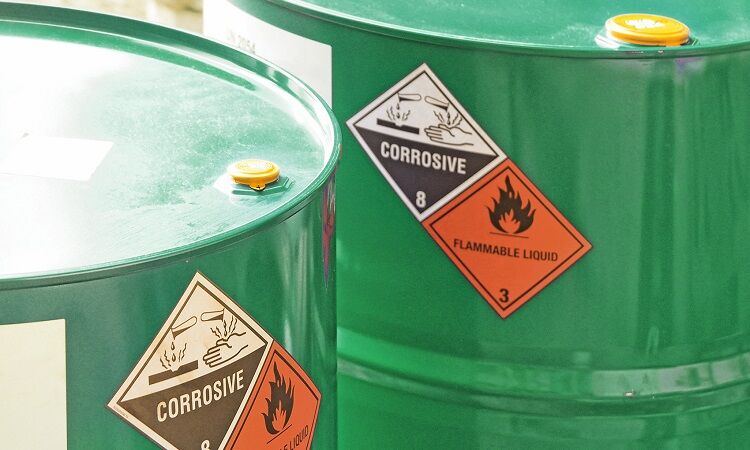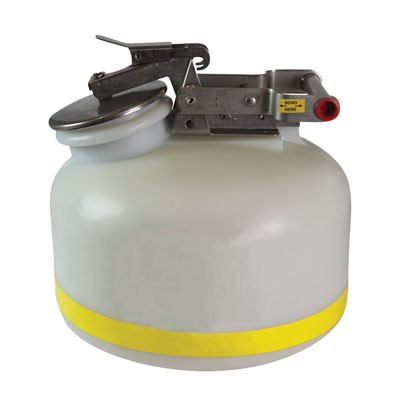Leading Industrial Wastewater Treatment Solutions: Making Certain Compliance and Performance
Leading Industrial Wastewater Treatment Solutions: Making Certain Compliance and Performance
Blog Article
Exactly How Fluid Garbage Disposal Works: A Detailed Introduction of Strategies and Technologies Employed

Review of Liquid Waste Kind
The complexity of liquid waste kinds necessitates an extensive understanding of their attributes and effects for disposal. Fluid waste can generally be categorized right into a number of kinds, including commercial, community, farming, and hazardous waste. Each group displays distinct residential or commercial properties, requiring details management strategies to alleviate ecological and wellness threats.
Industrial fluid waste stems from producing processes and typically includes a variety of contaminants, such as heavy steels, solvents, and organic substances. Metropolitan liquid waste, mostly making up wastewater from families and business establishments, contains raw material, nutrients, and pathogens (industrial wastewater treatment). Agricultural liquid waste, including drainage from ranches, might have plant foods, chemicals, and pet waste, posing dangers to water top quality and communities
Dangerous fluid waste is identified by its poisoning, reactivity, or possible to trigger injury. Understanding these varied liquid waste types is critical for establishing effective disposal techniques and making sure compliance with ecological laws.
Physical Treatment Techniques

Screening is the preliminary action, where larger particles and debris are eliminated from the liquid waste utilizing displays or grates. In sedimentation tanks, heavier fragments resolve at the bottom, developing a sludge layer, while the cleared up liquid can be further treated.
Filtration is one more necessary approach that involves passing the liquid through permeable products, such as sand or membranes, to capture smaller fragments. This action improves the quality of the fluid, making it appropriate for succeeding therapy processes.

Chemical Therapy Methods
Chemical treatment strategies are important for efficiently handling liquid waste, especially in addressing liquified and colloidal pollutants that physical techniques may not effectively remove. These techniques make use of various chemical agents to counteract, precipitate, or change unsafe substances right into less harmful forms.
One usual method is coagulation and flocculation, where chemicals such as alum or ferric chloride are added to advertise the aggregation of put on hold particles. This process improves sedimentation, permitting for easier elimination of the resulting sludge. Additionally, oxidation processes, utilizing representatives like chlorine or ozone, are utilized to damage down complicated organic compounds and pathogens, rendering the waste much safer for discharge or additional therapy.
Neutralization is an additional crucial technique, which readjusts the pH of acidic or alkaline waste streams to neutral degrees, protecting against prospective harm to downstream systems and the atmosphere. Moreover, advanced oxidation procedures (AOPs) make use of mixes of oxidants and ultraviolet light to break down consistent contaminants, achieving a higher degree of therapy performance.
Biological Therapy Procedures
Organic treatment procedures play a crucial role in the management of liquid waste by utilizing bacteria to decay raw material and lower impurity degrees. These procedures can be broadly classified right into anaerobic and cardiovascular therapies, each employing particular microbial communities to attain efficient waste deterioration.
Aerobic treatment entails the use of oxygen to help with the failure of natural materials by bacteria. This process is commonly carried out in triggered sludge systems, where oygenation containers give a favorable environment for microbial growth, causing the oxidation of natural pollutants. The resultant biomass can be separated from dealt with effluent via sedimentation.
On the other hand, anaerobic treatment occurs in the absence of oxygen, counting on various germs to damage down raw material. This method is specifically helpful for high-strength waste, as it creates biogas, an eco-friendly energy resource, while lowering sludge production. Technologies such as anaerobic digesters are often used in industrial and municipal applications.
Both cardio and anaerobic organic therapies not just reduce the environmental influence of liquid waste but likewise assist in source recuperation, making them necessary elements of lasting waste management approaches. Their effectiveness, effectiveness, and adaptability sustain their extensive application across numerous markets.
Emerging Technologies in Disposal
Innovative strategies to liquid waste disposal are swiftly progressing, driven by improvements in innovation and an enhancing emphasis on sustainability. Amongst these arising innovations, membrane bioreactors (MBRs) Home Page have actually acquired grip for their ability to incorporate biological therapy with membrane layer filtering, resulting in top notch effluent that can be recycled in different applications. MBRs make it possible for smaller footprints and more reliable operations compared to typical systems.
One more encouraging development is the use of anaerobic food digestion combined with nutrient recuperation innovations, which not just deals with liquid waste but additionally creates biogas and recovers valuable nutrients like nitrogen and phosphorus. This twin benefit boosts resource efficiency and lowers ecological impact.
Furthermore, progressed oxidation processes (AOPs) are being adopted for the destruction of complex organic go to this website contaminants. These methods use effective oxidants and catalysts to break down contaminants at the molecular degree, providing an extremely reliable remedy for tough waste streams.
Furthermore, the integration of expert system and artificial intelligence in waste management systems is optimizing operational performance and anticipating maintenance, leading to reduced expenses and boosted ecological compliance. These modern technologies show a significant shift towards more reliable and lasting fluid garbage disposal techniques.
Verdict
In final thought, effective fluid waste disposal necessitates a comprehensive understanding of numerous strategies and technologies. By continuously advancing these approaches, it ends up being possible to resolve the expanding challenges connected with fluid waste, eventually adding to environmental protection and source recuperation.
Fluid waste disposal is an important facet of ecological administration, needing a comprehensive understanding of different methods and technologies customized to different waste types. Fluid waste can generally be categorized into numerous kinds, consisting of commercial, municipal, agricultural, and unsafe waste. Agricultural liquid waste, including drainage from farms, may consist of fertilizers, pesticides, and pet waste, posturing dangers to water high quality and communities.
Various physical therapy methods play a critical duty in handling fluid waste effectively - industrial wastewater treatment.In verdict, reliable liquid waste disposal demands a click here now thorough understanding of different techniques and technologies
Report this page